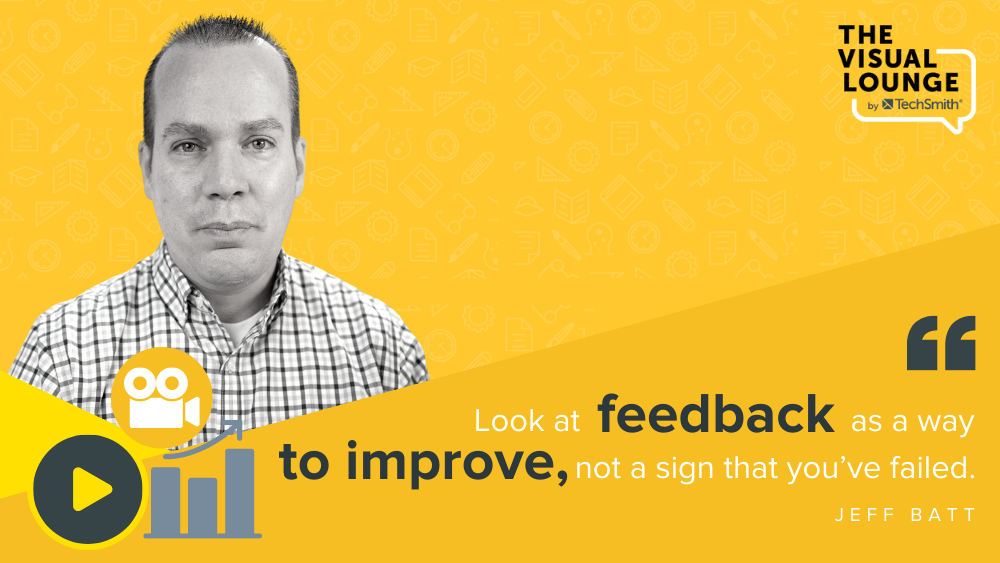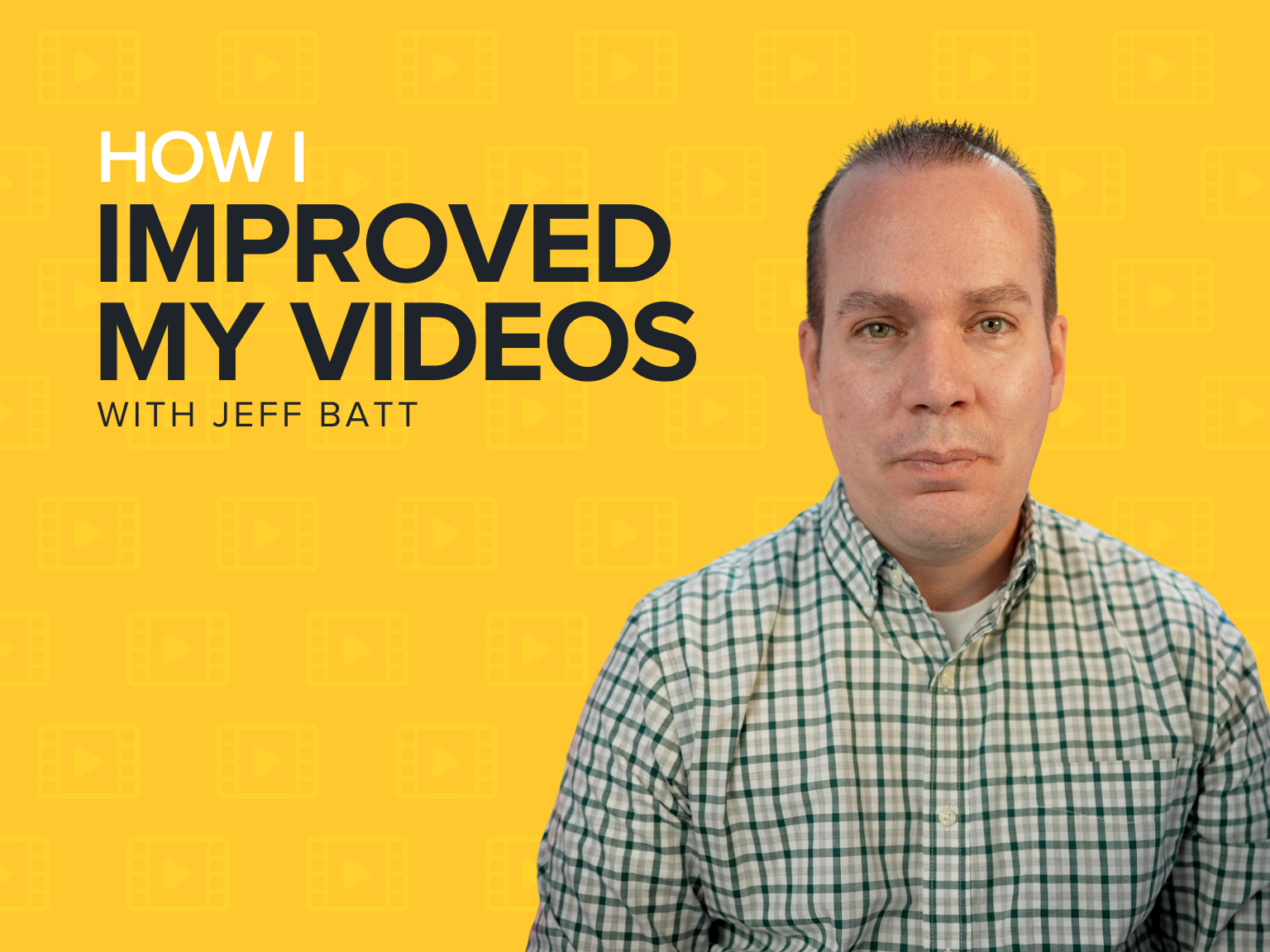Video creation skills aren’t “built in a day.” Like everything else worth learning, it’s a gradual process that you’ve got to embrace every step of the way.
To share the story behind his stellar video creation skills, Jeff Batt, Learning & Development Specialist and Founder of Learning Dojo, joins The Visual Lounge.
He takes us back to where it all started to talk about his humble beginnings in video creation. Jeff also explains his production process and shares some insightful advice for anyone looking to up their video-making skills.
Jeff has a wealth of experience ranging 10+ years in the digital learning and media industry. He also has a strong background in web development and is a regular conference speaker covering eLearning technologies such as Captivate and Camtasia.
You can watch the video on this topic at the top of this post, to listen to the podcast episode, hit play below, or read on for more…
Things to consider when you’re just getting started in video creation
Speaking from experience, Jeff advises beginners to strive for perfection but not to wait until they’re perfect before showcasing their work.
It’s all part of the learning process. So, don’t wait to buy that fancy camera or audio equipment before you put yourself out there.
Another thing to consider is scripting. Jeff had a whole back and forth relationship with scripting when he was starting out.
At first, he thought he needed to script out his videos to sound more fluent. But it just ended up making him sound a bit robotic. As an alternative, he recommends coming up with bullet points and using them as speaking points.
Jeff’s third major thing to consider is practice…you need lots of it. The more you practice talking about a topic, the easier it is to teach or speak more fluently on camera.
Finally, Jeff talks about feedback and how to receive it when you’re first getting started. It’s easy to get deterred, especially if you’re unsure of yourself. However, feedback isn’t a condemnation of your work, rather it’s an indication of the areas you need to improve on.
So, accept constructive feedback, apply it, and watch your video skills level up.

Jeff’s gear guide for beginners
If budget constraints exist, you should start with a Blue Yeti microphone. As Jeff tells us, “they’re still top of the line.” But if you have a little more money to play with, then the Shure SM7B is a good way to go.
However, Jeff’s best audio investment so far is the Rode Procaster, which allows him to control up to four microphones at once.
If you’re just getting started in video creation and looking for a good audio setup, get yourself a good microphone first and foremost.
As far as lighting is concerned, an excellent place to start is with a ring light. But, if you have the budget, Jeff recommends Godox lights.
Common challenges when developing video creation skills
Chances are, as you’re just starting out, you don’t have fancy, expensive equipment to get the video quality you want.
Like most newbie video creators, Jeff faced this same challenge in his early days, but he powered through with what he had.
First, he didn’t have the high-grade DSLR camera he uses today, so he started out using his iPhone to shoot videos. An iPhone isn’t a bad place to start, but it posed quite a few challenges, especially when it came to matching video quality with sound and getting the right lighting.
Speaking of lighting, that was a tough one to figure out as well. Jeff got started with a ring light, which is fine if you know how to manipulate it properly. He had to combat harsh shadows in his background in most of his early videos, but that all changed as he learned a little more and upgraded his setup bit by bit.
Another major challenge Jeff faced, mainly on the L&D front, was deciding whether to script or not to script. He eventually went with the latter.
Key takeaway? It takes patience, flexibility, and the ability to tweak your work to perfect any areas you’re lagging in.
Adopt an “Agile” approach over a “Waterfall” approach
This links back to Jeff’s advice about perfection — sure, it’s great to strive for it, but never let it hold you back.
The Agile methodology involves trying your hand at things and learning as you grow. On the other hand, the Waterfall approach requires that you get everything right every step of the way.
In Jeff’s opinion, the Waterfall approach isn’t a great way to level up your video creation skills. Instead, In Jeff’s opinion, the Waterfall approach isn’t a great way to level up your video creation skills. Instead, you should put something out there, see how it performs, learn from it, apply any upgrades, and then move on to the next lesson.
It’s a tried and tested way to get better.
Bottom line, don’t be afraid to fail. According to Jeff, failure isn’t the end of the line, it’s just an Bottom line, don’t be afraid to fail. According to Jeff, failure isn’t the end of the line. It’s just an opportunity to learn a few more lessons which is ultimately the only way you’ll improve your video skills.
For more pointers on how to upgrade your video-making game, check out the resources in the TechSmith Academy.



Share